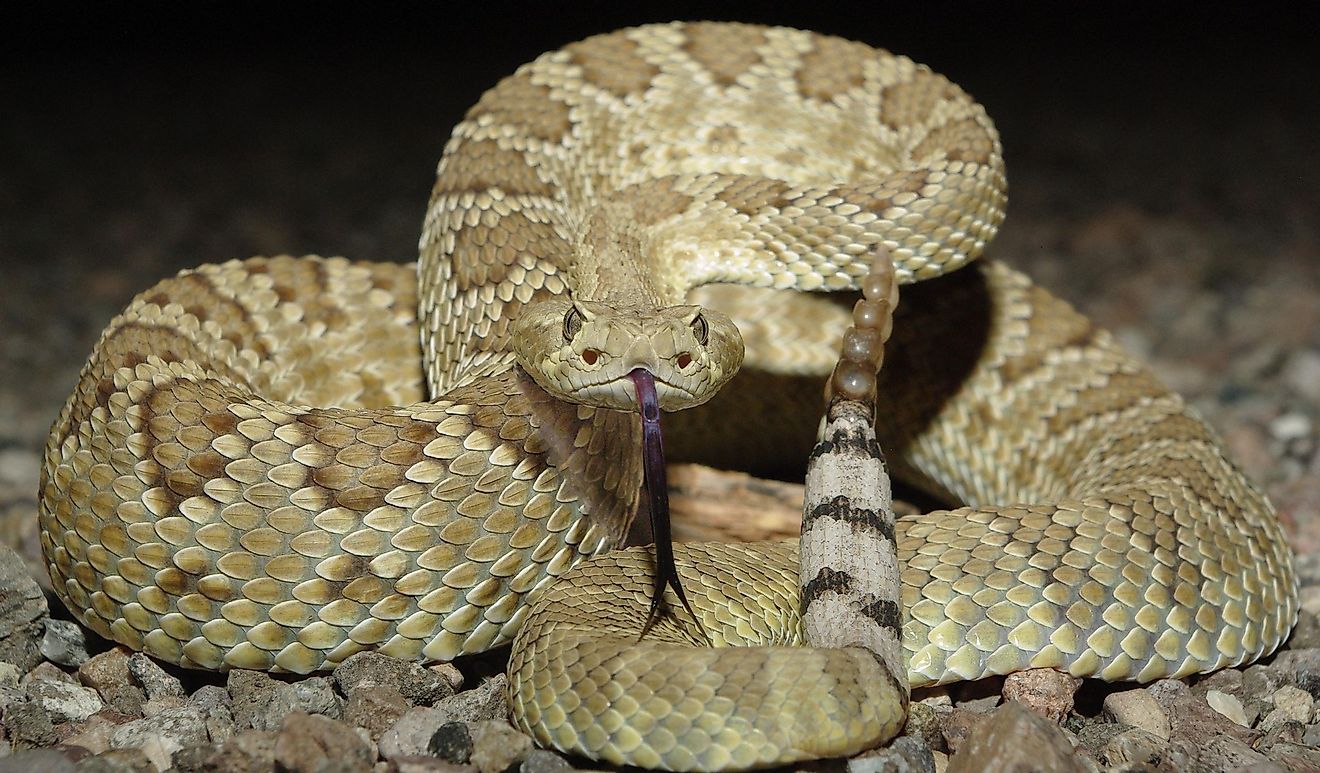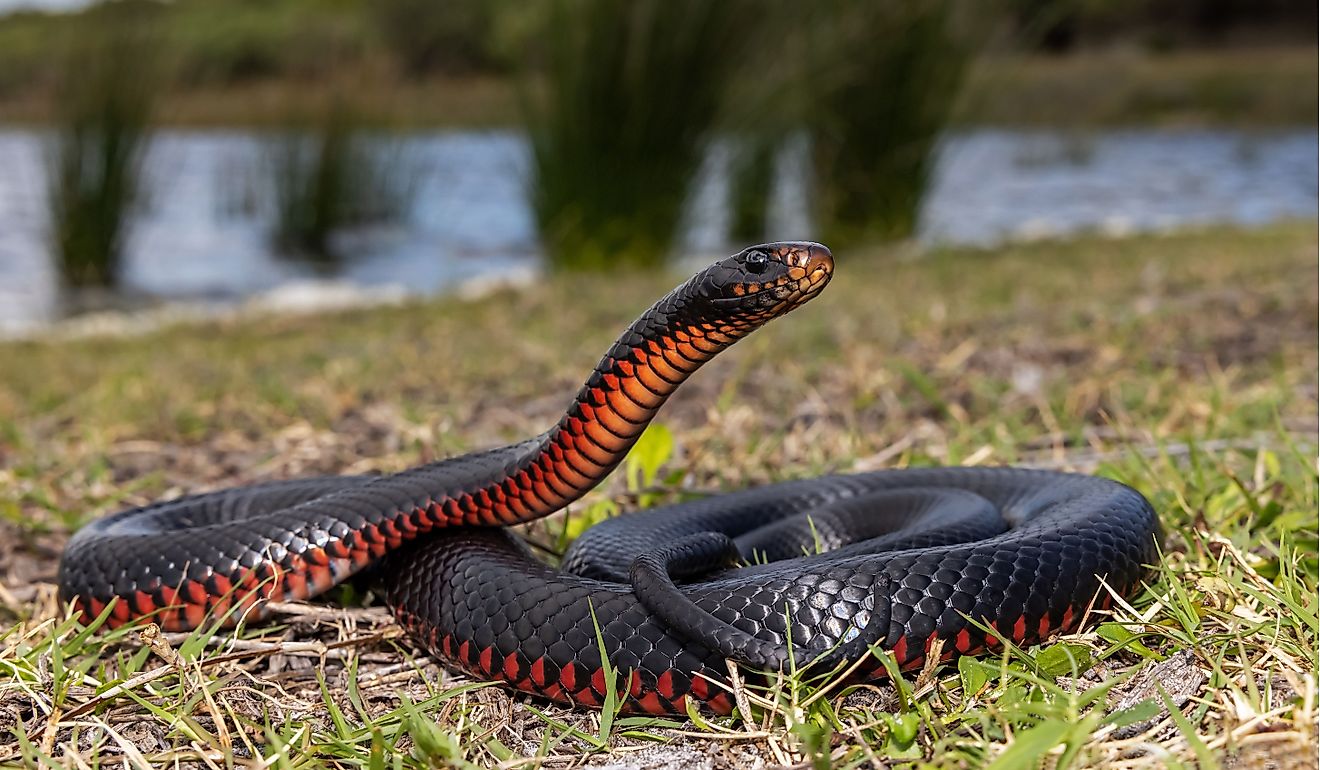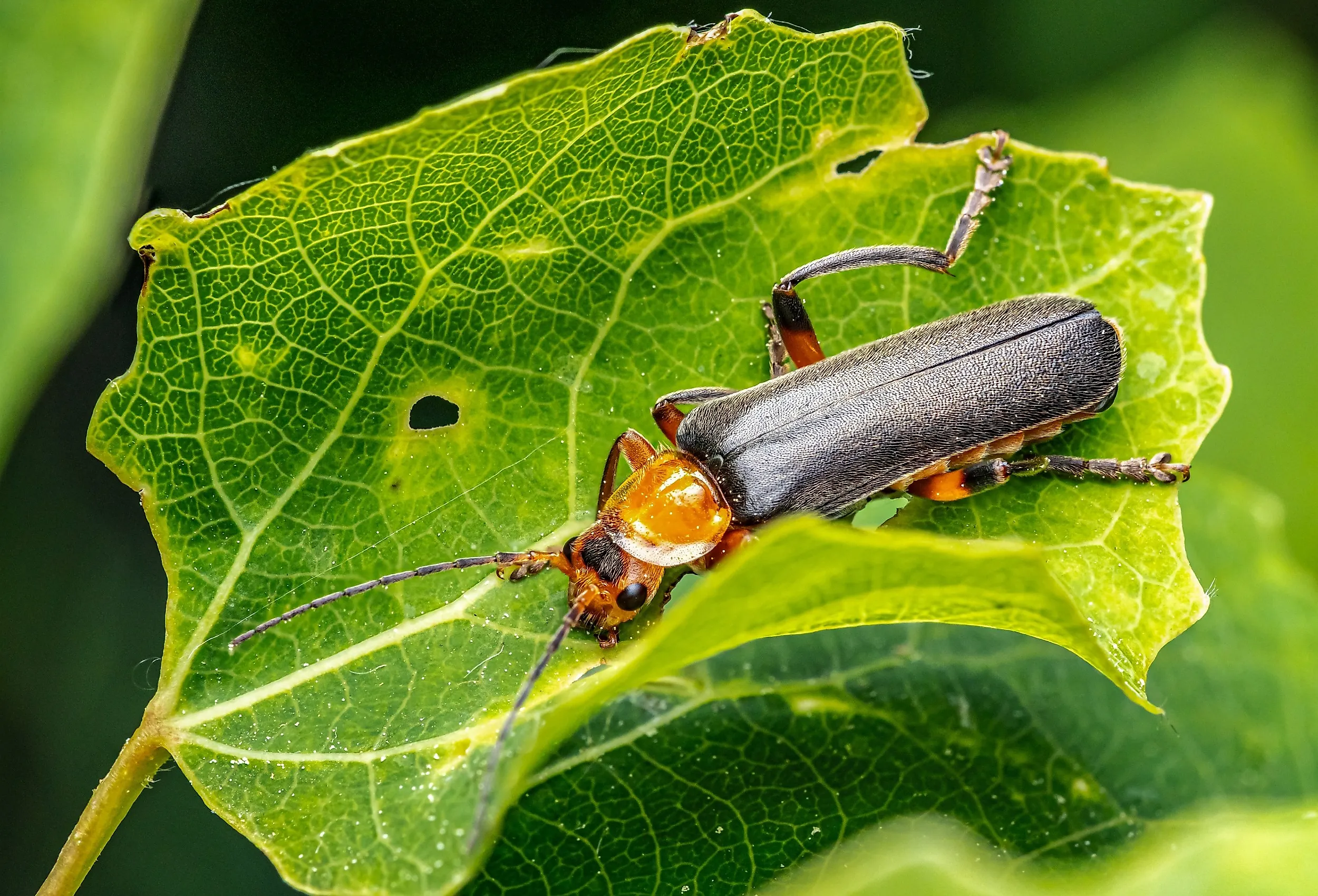
Bombardier Beetles on the Offense With Nature’s Chemical Cannon
The Bombardier Beetle is not your average creepy-crawly. This ingenious insect has developed a powerful defence mechanism that uses chemical warfare to keep predators at bay. When threatened, the tiny Bombardier Beetle has the ability to shoot boiling hot poison out of its rear end, spraying its attacker and incapacitating them long enough for the insect to make its escape.
The Bombardier Beetle is not the only creature to use chemical defences. Still, this method is quite effective, and researchers have only figured out the key to its amazing chemical weapons within the last decade. Now that scientists are unlocking the secrets of the Bombardier Beetle’s defence strategy, they hope to apply those lessons elsewhere and make further technological advances.
About Bombardier Beetles
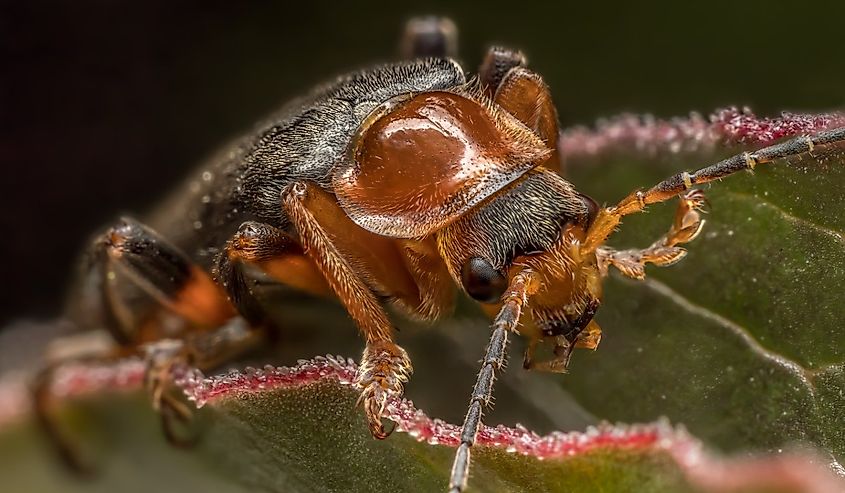
Despite their intimidating defences, Bombardier Beetles are very small, measuring less than an inch, or around 2.5 cms, long. They have a reddish brown head, reddish brown legs, and dark blue wing coverings.
You may well encounter a Bombardier Beetle at some point, as they are found everywhere on the planet apart from Antarctica. In the United States alone, there are 40 different species of these insects and over 500 species worldwide. Their preferred habitat is temperate woodlands and grassland where they can take cover under grass, brush, leaf litter, and other natural shelters. This is also a good setting for them to find and feed on smaller insects.
An Explosive Defence
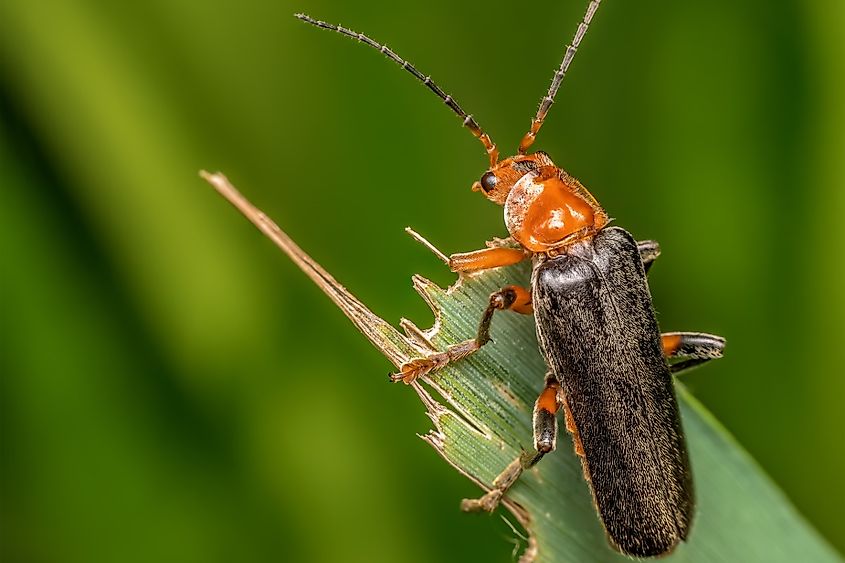
The Bombardier Beetle’s remarkable defence strategy is basically the animal kingdom’s version of using pepper spray to protect itself, but how exactly does it work?
The liquid the beetle produces is benzoquinone, a chemical compound also used in making dyes. Benzoquinone is poisonous if inhaled or swallowed and can irritate the skin, eyes, and respiratory system.
When threatened or attacked, the beetle sprays benzoquinone through the tip of its abdomen through a kind of natural nozzle that can rotate 270 degrees to create a wide spray of fire. At this point, the chemical is at the temperature of boiling water, and that high heat gives it enough pressure to produce a strong, jet-like stream.
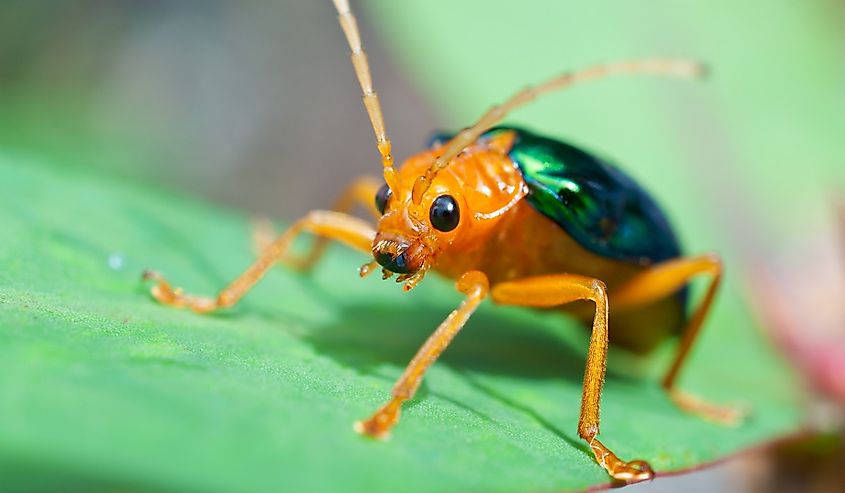
With such an effective defence, it is no surprise that the Bombardier Beetle has few predators, but larger animals can sometimes guzzle them up. As one study shows, even being eaten doesn’t stop the beetle from relying on its toxic jets.
In the study completed by Shinji Sugiura and Takuya Sato, toads were encouraged to eat Asian Bombardier Beetles. After devouring them, almost half of the toads vomited them back out, and, by examining the regurgitated beetles, scientists determined that they had sprayed their chemical defences while inside the toad’s digestive system. Even more surprisingly, both beetles and toads survived the experience.
Solving the Mystery of the Beetle’s Chemical Weapons
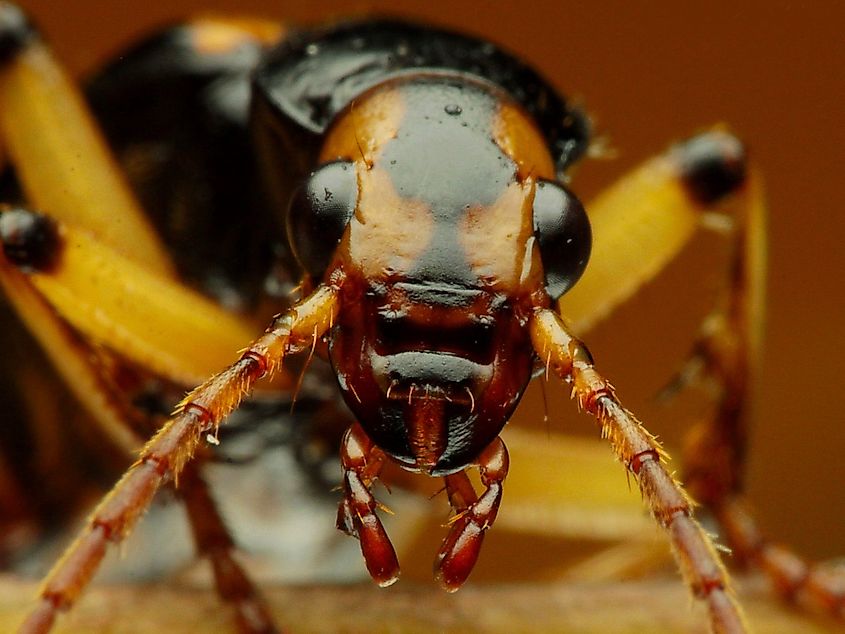
For years, scientists were puzzled at how a creature could explosively emit scalding hot liquid from its behind without killing, or at least severely burning, itself. It wasn’t until researchers from the Massachusetts Institute of Technology (MIT) used X-ray imaging to look inside the beetle that the mystery was solved.
Bombardier Beetles have two chambers in their abdomen, linked by a single passageway. Each chamber contains a chemical that is stable on its own but, when combined, triggers an intense reaction that creates super-hot benzoquinone. A flexible membrane and a valve control the opening and closing of the passageway between the chambers and quickly push the chemicals into a third ‘reaction chamber’ so the beetle can create and expel its explosive reaction in a split second. The chemical compound is sprayed in pulsing waves, allowing the insect's abdominal cavity to cool slightly between bouts.
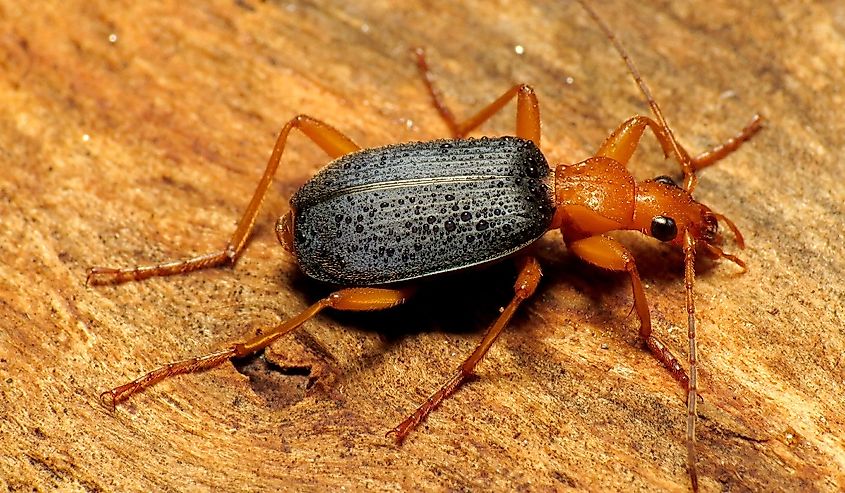
Many beetle species produce chemicals as a defence, but the Bombardier Beetle stands out from the crowd. Not only does its explosive instant reaction make the spray hotter, but the jet is also five times faster than that seen in insects that also use benzoquinone as a deterrent.
Not all Bombardier Beetles have the same explosive strategy, however. There is some variation among the different species. The Metrius contractus, for example, discharges its chemical defense as a foamy goo along its body.
What We Can Learn From Bombardier Beetles
Bombardier Beetles are truly one of nature’s miracles, and scientists hope that by studying their unique abilities, they can finesse human inventions. Research on the sophisticated chamber and release mechanism that protects the beetle from internal burns could help design blast protection systems, propulsion systems, and drug delivery.
In practice, this could mean more efficient and effective inhalers, fire extinguishers, car engines, and jets. Science is only just beginning to explore the potential of this unique beetle’s miraculous bioengineering. Not bad for an insect less than an inch long.


